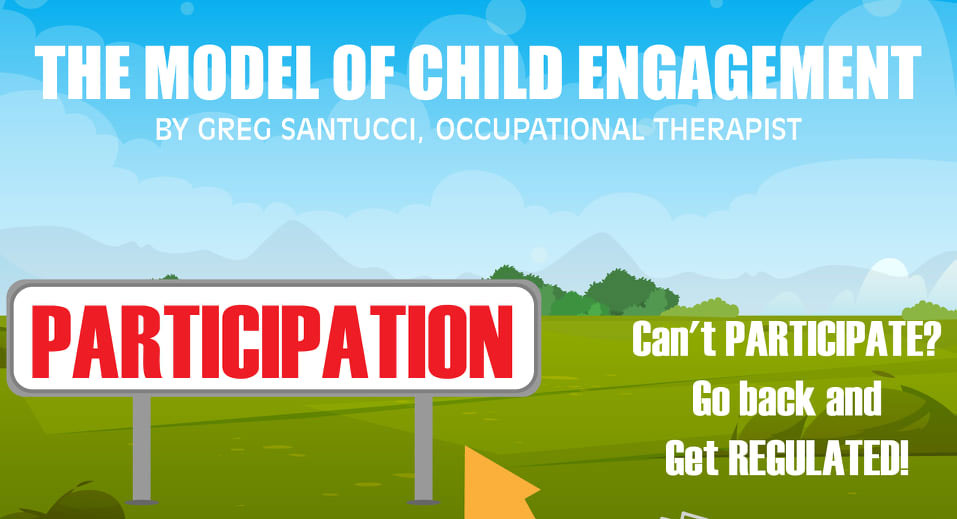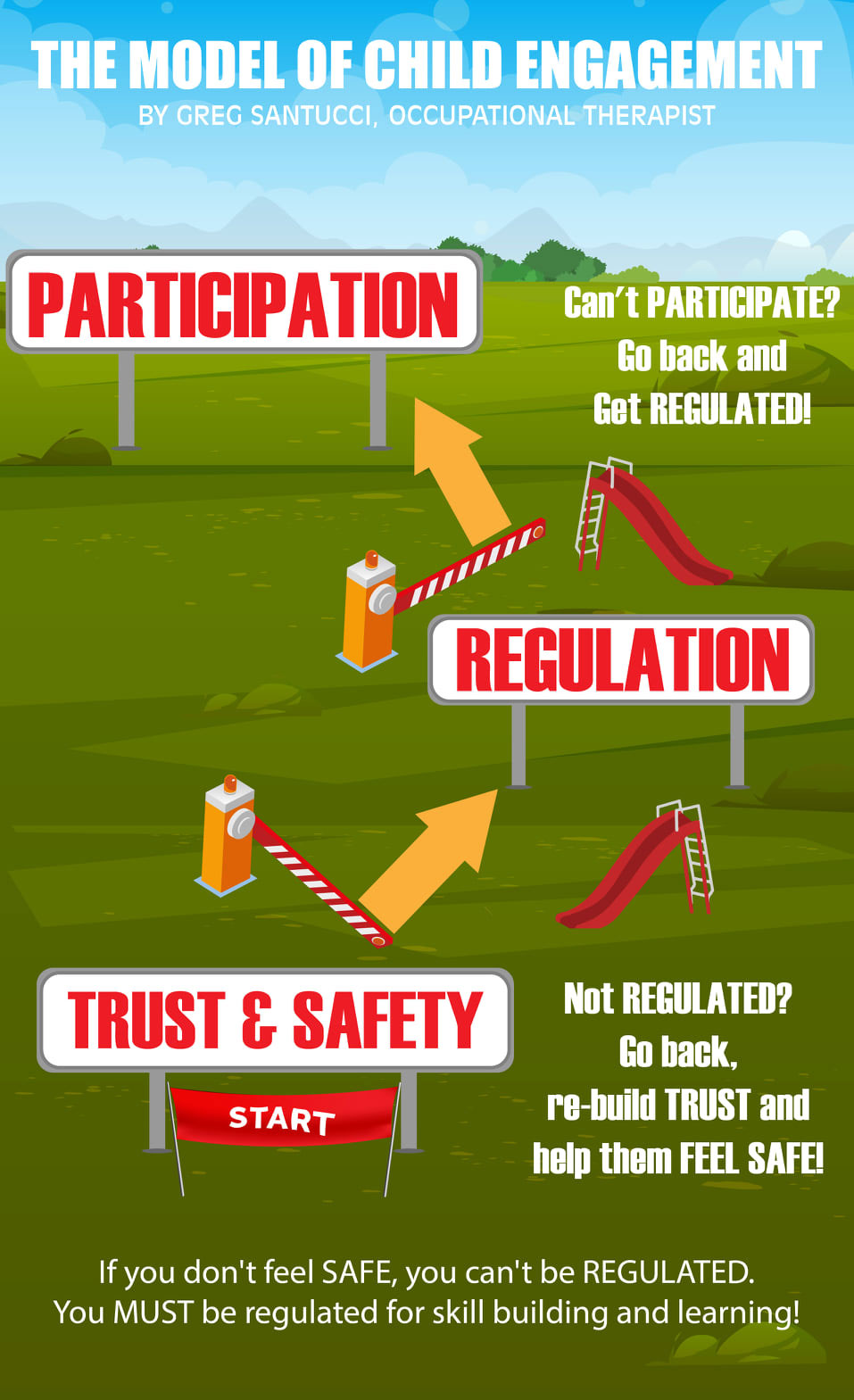Model of Child Engagement (MOCE)
 April 26, 2021
April 26, 2021
The Model of Child Engagement (MOCE) grew out of 20 years of clinical practice and represents over 30 years of brain research that has provided professionals a better understanding about how a child develops and what influences their behavior.
The goal of this model is to provide professionals with a tool to help them improve the overall engagement of the children they're working with. Therapists are under tremendous pressure to show progress, provide measurable outcomes and prove their effectiveness. For that reason, it’s not uncommon for therapists to move quickly to the more measurable components of their plan of care: the activities. When a child appears disconnected or is difficult to engage, sessions can be challenging. So, how do you engage a child who appears disconnected, or has a different agenda than you? The Model of Child Engagement provides a vital framework to help professionals guide each session and each interaction with the child.
The premise of The Model of Child Engagement is simple: FIRST and FOREMOST, make sure the child feels SAFE. When they feel safe, you can then help them get regulated by addressing their sensory processing abilities. Once they're regulated and ready to participate, THEN a therapist can proceed with skill building and learning. If a child doesn’t feel safe, they will not be regulated, and you MUST be regulated in order to learn.
The infographic represents the clinical reasoning skills that occur with each child interaction.

Safety is paramount, so connecting with a child and assuring they feel safe is the "start" of any interaction. As they feel safe and trust their environment, the “gate“ opens and we can focus on the regulation skills they will need to participate at their highest level of ability (emotional regulation, sensory modulation).
If, during a session, they feel threatened or they lost their sense of control, the “gate” closes and we have to “slide” back down and earn their trust again.
If a child becomes dysregulated while participating in an activity (i.e. becomes over-excited, loses focus, elopes), the participation gate closes and we have to slide back down and get them regulated before continuing with the activity. These kids are not “being bad”, they’re dysregulated.
This is a fluid model, so a therapist can move up and down between levels throughout a treatment session. The goal is always participation, but the prerequisites of safety and regulation are necessary in order to engage a child.
I look forward to sharing the case studies and data being collected showing the efficacy of this model in the days and months to come. For now, I encourage therapists to keep this model in mind as they work with children who they consider “challenging” or difficult to engage.
I am so excited to share this with you and truly hope it helps you connect with your kids, support them, and help them thrive!